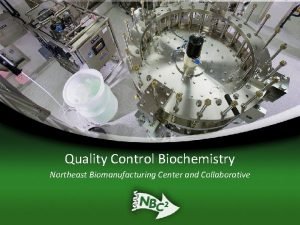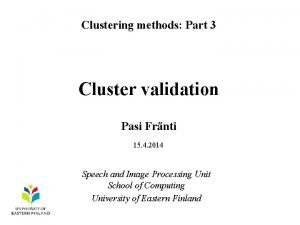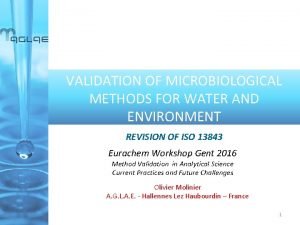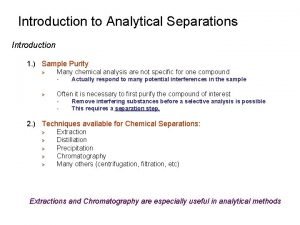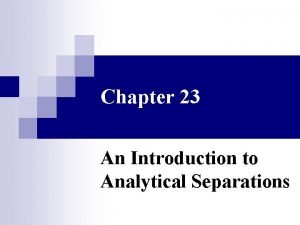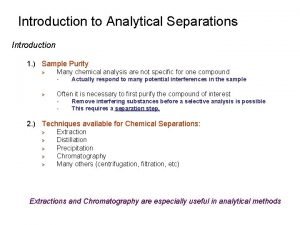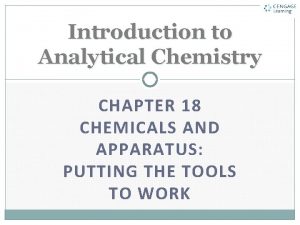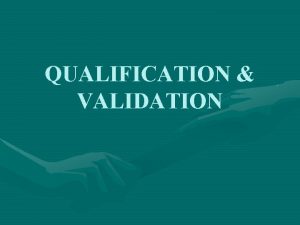Validation of Analytical Methods Introduction Analytical methods plays







- Slides: 7

Validation of Analytical Methods Introduction: Analytical methods plays a vital role in new drug development, preformulation and formulation studies, stability studies and quality control testing. This method must be simple, specific, accurate, precise, economical and convenient. The method should be validated during its development and use. Concept of Validation: Validation is relatively new concept in pharmaceutical manufacturing evolved in 1980’s. Validation is documented evidence which provides a high degree of assurance that a specific process will consistently produce a product meeting its pre-determined specifications and quality characteristics. PRITAM JAIN 1

Analytical Validation: Analytical validation refers to the evaluation and proving that an analytical method serves the intended purpose. Analytical validation ensures that the selected analytical method will give reproducible and reliable results adequate for intended purpose. 1. Accuracy: Accuracy is the agreement between the test results obtained by the proposed method and the true value. It expresses the correctness of the method. It is expressed as percentage by the assay of known amount of substance. Accuracy also evaluated by recovery studies, in which known amount of drug is added to previously analyzed pharmaceutical preparation of the drug and tested for the recovery of the added drug. PRITAM JAIN 2

The absolute error is a measure of the accuracy of the measurement, it is then calculated as Absolute error = Mean error (True value – Measured value) / True value x 100 2. Precision: Precision refers to the agreement among the individual test results when a method is applied repeatedly to the sample. It is a measure of degree of repeatability or reproducibily of a method. The precision of an analytical procedure is usually expressed as relative standard deviation (RSD), which is calculated as RSD = S. D. / Mean x 100 PRITAM JAIN 3

3. Specificity: Specificity of a method refers to the ability of the method to measure accurately and specifically the substance of interest in the sample as impurities, degradation products. For this the test results of analysis of samples containing other ingredients is compared with the samples without containing ingredients. 4. Linearity: The linearity of an analytical method is its ability to obtain test results which are directly proportional to the concentration of analyte in the sample. 5. Range: The range of an analytical method is the interval between the upper and lower concentration of analyte in the sample. Beer’s law response – concentration curve should be linear at least 5 -6 points in the range. PRITAM JAIN 4

6. Detection limit: The detection limit of an individual analytical procedure is the lowest amount of analyte in a sample which can be detected but not necessarily quantitated. 7. Quantitation limit: The quantitation limit of an individual analytical procedure is the lowest amount of analyte in a sample which can be quantitatively determined with suitable precision and accuracy. 8. Robustness: Robustness is the measure of the capacity of the analytical method to remain unaffected by small but deliberate variations in procedure. PRITAM JAIN 5

9. Ruggedness: Degree of reproducibility of test results obtained by analyzing the sample under variety of normal test conditions is known as ruggedness. 10. Sensitivity: Sensitivity refers to the smallest quantity that can be accurately measured. It also indicates the capacity of the method to measure small variations in concentration. In the case of UV and Visible spectrophotometric methods, an estimate known as Sandell’s Sensitivity’ is used to evaluate the sensitivity of the method. PRITAM JAIN 6

Repeatability: Repeatability expresses the precision under the same operating conditions over a short interval of time. Reproducibility: Reproducibily expresses the precision in the labotratories. PRITAM JAIN 7

